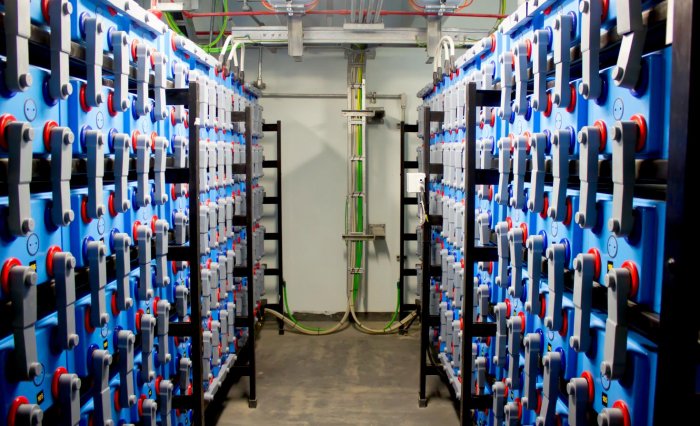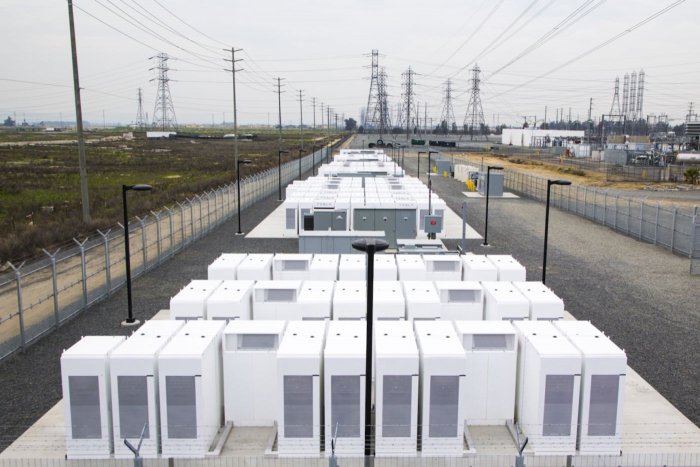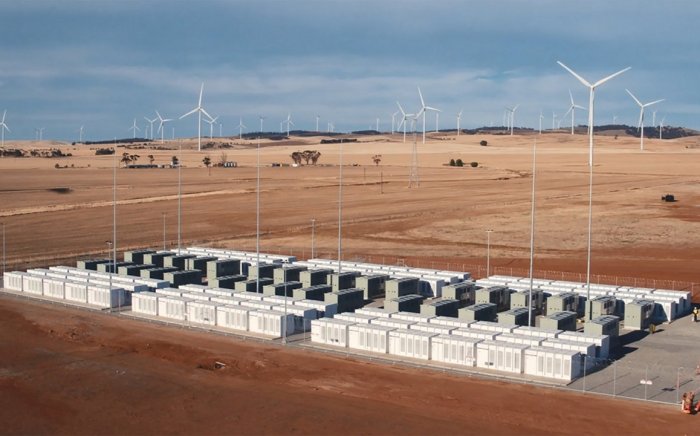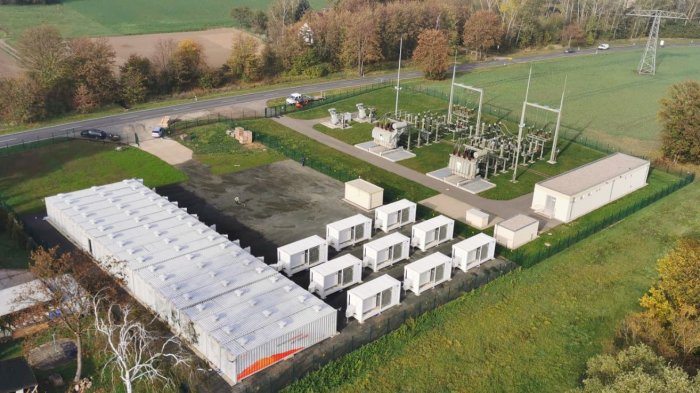Accumulator plants, the use of batteries to store electrical energy
One of the most efficient and promising ways to store electrical energy, in terms of its storage density, is the use of storage plants based on batteries, which allow storage of energy in chemical form.
Battery power plants are particularly useful when it is necessary to provide auxiliary short-term peak power, thereby preventing emergency power outages to consumers.
Thus, battery power plants, according to the principle of their operation, have many features in common with conventional continuous energy sources, differing, however, in the larger size of the structure. A separate room is set aside to house the station's batteries, similar to a large warehouse or several containers.
As in uninterruptible power supply technology, there is a characteristic feature here, which consists in the fact that the electrochemical energy stored in the batteries can be used exclusively in the form of direct current.
But since conventional networks require alternating current to obtain, it is necessary to carry out an additional transformation of the energy stored in the batteries. That is why high voltage current is much more suitable to transmit energy over a distance, are obtained using powerful thyristor inverters, which are necessarily part of power plants.
The type of batteries used in a particular installation is determined by its cost, performance requirements (stored energy, available power) and expected service life. In the 1980s, only lead-acid batteries could be found in storage power plants. In the 1990s and early 2000s, nickel-cadmium and sodium-sulfur batteries appeared.
Today, due to the decline in the price of lithium-ion batteries (due to the rapid development of the automotive industry), lithium-ion is mainly used. Flow-through battery systems have already appeared in some places. However, lead acid solutions can still be found in some budget buildings.
The advantage of battery power plants compared to pumped power plants is obvious. There are no constantly moving parts, practically no sources of noise. A few tens of milliseconds are enough to start a battery power plant, after which it can immediately work at full capacity.
This advantage allows battery plants to easily withstand maximum loads that are not even perceived by the equipment as something critical, so such a station can work at its maximum for hours.
Needless to say, battery stations easily cope with the task of damping voltage fluctuations caused by peak loads on the network. Thanks to them, cities and entire regions can be protected from power outages caused by traffic jams.
The same applies to the operation of battery power plants in connection with renewable autonomous energy sources, today it is an entire industry.
Renewable energy [production of renewable energy (renewable energy)] — The field of economics, science and technology covering the production, transmission, transformation, accumulation and consumption of electrical, thermal and mechanical energy obtained by using renewable energy sources.
I have batteries of different types there are advantages and disadvantages. Some (sodium-sulphur) work well in constant mode, for example in combination with autonomous energy sources, but are prone to corrosion and aging, even if they are not used. Others suffer from wear and tear simply due to the high number of rapid charge-discharge cycles.
Some batteries require regular maintenance (lead-acid batteries must be recharged with water), gas evacuation to prevent explosion, etc.
More modern sealed lithium-ion batteries can work for a long time without maintenance, their condition is monitored by electronics and, if necessary, signals the need to replace the cell.
A modern example is one of the largest power plants in the world — Hornsdale Power Reserve, which works together with the Hornsdale Wind Power Plant. Tesla built it in late 2017.
In early 2018, while South Australia suffered economic losses, the station brought its owners nearly a million dollars to supply electricity to the grid at A$14,000 per megawatt hour. The plant is capable of continuously providing 30 MW for 3 hours and 70 MW for 10 minutes.
100 MW is the total design capacity of the power plant. The station's entire battery capacity, 129 MWh, consists of several million Samsung 21700 lithium-ion cells (3000-5000 mAh).
The system reliably maintains the grid of electricity consumers in a stable state even in cases where the wind speed is extremely low. In 2020, the plant's capacity has been increased to 194 MWh, and the design capacity is 150 MW.
An example of old technology is the battery power plant in Chino, California, from 1988 to 1997. The plant included 8,256 lead-acid batteries located in two halls.
The structure serves as a static deformation joint reactive power and protecting consumers from power outages during power outages. Its peak power was 14 MW with a total battery capacity of 40 MWh.
See also:
The most common types of industrial energy storage devices
How do kinetic energy storage devices work and work for the power industry?




